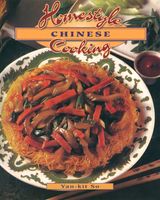The Wok
By Yan-Kit So
Published 1997
The last three decades saw such an increased interest all over the world in Chinese cooking that in the late 1970s “wok” appeared in the Collins English Dictionary. Wok is the Cantonese pronunciation, while guo is the pinyin Chinese. But in China today, as in the rest of the world, this thin-walled, hemispherical pan, made more often than not of carbon iron than of cast iron, is known as the wok.
Become a Premium Member to access this page
Unlimited, ad-free access to hundreds of the world’s best cookbooks
Over 160,000 recipes with thousands more added every month
Recommended by leading chefs and food writers
Powerful search filters to match your tastes
Create collections and add reviews or private notes to any recipe
Swipe to browse each cookbook from cover-to-cover
Manage your subscription via the My Membership page
In this section
Advertisement
Advertisement


